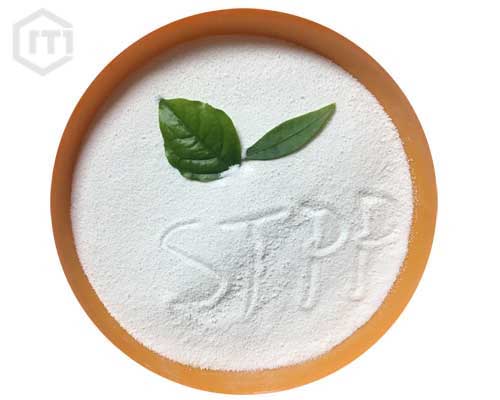Neutralization Degree
The degree of neutralization is the degree of reaction between phosphoric acid and caustic soda. The reaction determines how much various substances are ultimately produced. Theoretically, the degree of neutrality we control must be equal to 3.00 in order for the reactants to produce pentasodium products. However, the degree of neutrality we control generally deviates from this theoretical value in practice. This is mainly because in the actual production control, the degree of neutralization is greatly affected by the analysis errors of raw materials and personnel. Generally speaking, the degree of neutralization has some effects on the quality of the final pentasodium product. If the degree of neutralization is low, it means low pyro sodium, high total phosphorus, high water insolubles, low type 1 and low pH value.
The Concentration of The Neutralizing Solution
Except for NaAPO4 and NaH2P04, most of the neutralization solution is water. Our polymerization reaction consists of two parts: drying and polymerization. The degree of the concentration of the neutralizing solution is reflected in the amount of water in the material. I type stpp has a great relationship with the partial pressure of water vapor in the polymerization furnace. Without any change in other process indicators, if the degree of concentration of the neutralizing solution is high, the type I is high. If the degree of concentration of the neutralizing solution is low, the type I is low, too.
The Pressure of High-pressure Pump
The pressure of high-pressure pump affects the amount of slurry entering the polymerization furnace, that is to say, it affects the output. Meanwhile, it also affects the atomization effect. The higher the pressure, the better the atomization effect and the lower the final product density. The larger the contact area between the material and flame, the better the polymerization effect and the higher the content of pentasodium. In addition, it can also directly reflect the good or bad configuration of the furnace head spray gun, and whether there is a blockage.
Polymerization Furnace Temperature
In actual control, because the combustion temperature of the polymerization furnace head is high, the temperature of the polymerization furnace tail is generally used as the control basis. According to the theoretical requirements, the polymerization temperature of pentasodium triphosphate is generally between 480℃ and 560℃. But after adding a certain amount of catalyst (such as amine nitrate, urea, etc.) to the neutralization liquid, the polymerization temperature will be reduced to between 380℃ and 420℃. In other words, the combustion temperature of the polymerization furnace will directly affect the content of STPP. In addition, it can also affect the content of I type in pentasodium tripolyphosphate.
Specifications and models of spray gun
The combination of spray gun is an important factor that affects the the quality of STPP, for that it directly affects the atomization angle. During the aggregation process, in the case of no change in other process indicators, the smaller the atomization angle, the longer the spray distance, and the polymerization time will be shortened accordingly, which can make the content of pentasodium triphosphate low, the content of sodium pyrophosphate increase, total phosphorus reduce and the quality of products is unqualified.
If the atomization angle is large, the spray distance becomes short, then the material stays in the polymerization furnace for longer time, the product polymerization degree is better, and the product quality will be better then. However, if the atomization angle is too large, the spray distance is shorter, and the material can’t be sprayed into the high temperature area for polymerization, which will make it spray to the wall of polymerization furnace directly. Thus, it not only can’t polymerize, but also causes the furnace head to stick to the wall.
Speed of polymerization furnace
The speed of the polymerization furnace is also an important factor for polymerization. Under the condition that other process indicators do not change, the faster the speed of the polymerization furnace, the shorter the residence time of the corresponding material in the polymerization furnace. Then it may cause incomplete polymerization of the material. At the same time, the content of pentasodium will be low, the content of sodium pyrophosphate increases, the total phosphorus decreases and the water insoluble matter is high, the product quality if unqualified.
Blast pressure at furnace tail
A large amount of water vapor will be generated when the slurry reacts in the polymerization furnace. The role of wind at the furnace tail is to pump away the steam in time and obtain dry materials. The partial pressure of water vapor has a great influence on the type I pentasodium, the height of the wind pressure directly affects the rise and fall of pentasodium type I.
There are many factors affecting the quality of sodium tripolyphosphate, which must be strictly controlled in the process of production. Want to find high quality sodium tripolyphosphate(stpp)? Chemate, a reliable sodium tripolyphosphate supplier will be your best choice. Feel free to contact us for more details and price now.


